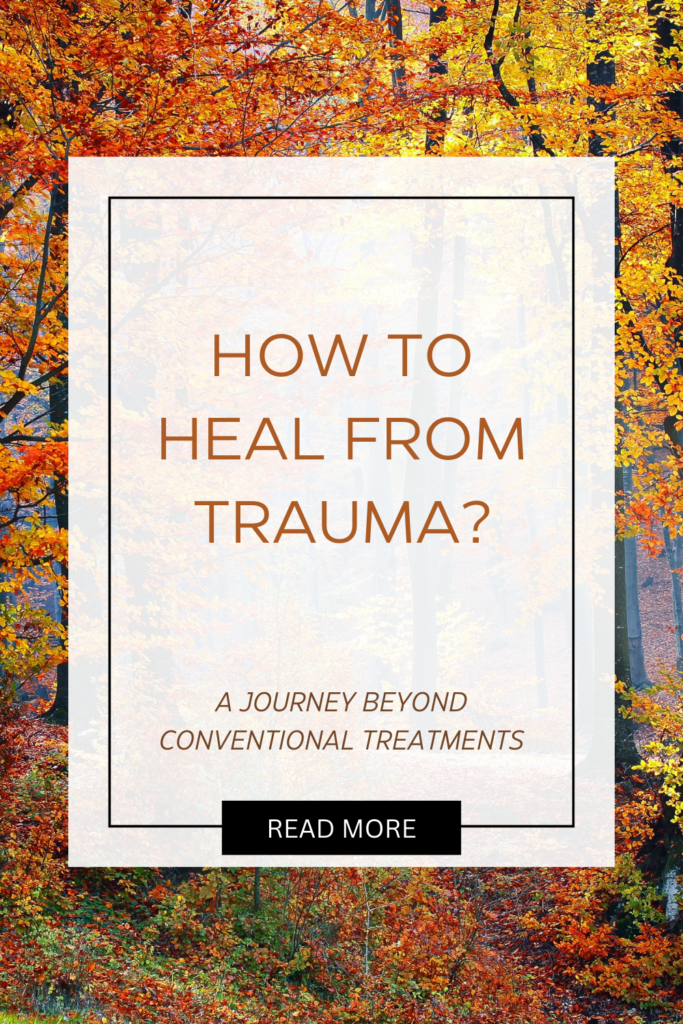For decades, the conventional approach to treating trauma and PTSD has centered around medication. Doctors have prescribed antidepressants like Prozac and Zoloft in an attempt to alleviate the suffering associated with trauma. However, as psychiatrist Bessel van der Kolk discovered through his pioneering research, these drugs often fall short.

“What we found is they didn’t work very well. Our conventional way of thinking about it is not working,” van der Kolk states. After over 50 years studying trauma, he has come to a profound realization – healing requires looking beyond the mainstream and exploring alternative therapies that create a deep mind-body connection.

The Quest for Innovative Trauma Treatments
Van der Kolk’s journey led him to investigate a variety of non-traditional methods, each offering its own profound insights. One of the first breakthroughs came with EMDR (Eye Movement Desensitization and Reprocessing) therapy. This technique involves having patients recall traumatic memories while visually tracking the therapist’s moving finger.
“Wiggling your fingers and following people’s eyes as they think about the trauma made the trauma go away,” van der Kolk recounts his initial skepticism. Yet the results were remarkable, with EMDR appearing to help rewire the brain’s circuitry and diffuse the persistent sense of danger.
Yoga represented another powerful modality. By developing breath awareness, exploring different postures, and cultivating body mindfulness, patients could rebuild a sense of safety within themselves. Van der Kolk’s research found yoga to be more effective than any drug they studied for PTSD.
The mind-body connection deepened further through theater and movement therapy. By embodying different roles and personas, patients could explore new ways of inhabiting their physical selves. A program called “Shakespeare in the Courts” even had juvenile offenders engage with the Bard’s works, allowing them to viscerally experience the depths of human emotion.
Technological innovations also proved fruitful, with neurofeedback training using brain sensors to guide patients into calm, focused brainwave patterns. Each of these methods served as a stepping stone in van der Kolk’s evolving perspectives on trauma healing.
The Promise of Psychedelics
However, it was the exploration of psychedelic-assisted therapy that represented one of the most profound frontiers. Van der Kolk vividly recalls his initial reluctance when colleagues proposed studying MDMA (the drug commonly known as ecstasy or molly):
“I go like ‘Wow! You’re speaking for my heart,’ because of course, I’m a child of the sixties and we dabbled in LSD and psychedelic substances. Wouldn’t it be great if he could do psychedelic substances to see if these substances can open up people’s minds? But, I said, ‘Don’t do it. It will destroy your career. These drugs are illegal.'”
Undeterred, his colleagues proceeded with the first MDMA-assisted therapy trials for PTSD. The results were unlike anything van der Kolk had witnessed before. Under the influence of MDMA in controlled clinical settings, patients were able to access their trauma memories from a profoundly altered state of consciousness.
“People are able to go to places they have never felt safe to go…But MDMA allows people to see themselves with compassion,” he explains. Feelings of self-blame and self-loathing dissipated as patients gained the emotional distance to process their trauma without being retraumatized.
While emphasizing that this treatment is not a “picnic,” van der Kolk believes MDMA could represent one of the most powerful tools for substantially reducing PTSD: “It looks like we have found something that causes a very substantial drop in PTSD. Probably more than just about anything else we have studied.”
A Holistic, Individualized Approach
Throughout his decades of research, one key insight has emerged for van der Kolk – there is no one-size-fits-all solution for trauma. Each person’s background, experiences, and neurophysiology differs. The essence of effective treatment lies in understanding these individual differences and tailoring therapies accordingly.
“Everything is an experiment in life. And healing from trauma is an experiment,” he affirms. Sometimes drugs may be helpful, for others a somatic practice like yoga holds more promise. For others still, expanded states of consciousness brought about by psychedelics could provide the missing piece.
Woven through van der Kolk’s pioneering work is a fundamental recognition of trauma’s complexity and the need for an open, holistic perspective. True healing requires compassionate care that treats the whole person – mind, body, and spirit.
By pushing past the boundaries of convention, van der Kolk and other trailblazers are forging new pathways in trauma therapy. While more research is still needed, their work points toward an exciting future where transformative healing becomes possible for those who have suffered most.